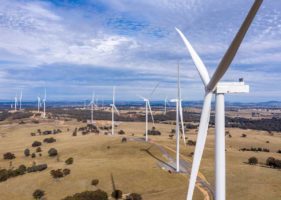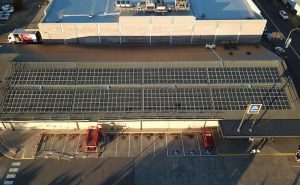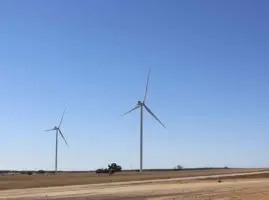Scientists say Australia’s soil carbon methodologies are flawed and overestimate emissions reductions, leading to warnings that farmers involved in the scheme could face a big bill down the track.
Under the offset scheme, producers receive credits for storing carbon in the soil that companies or the federal government can then buy from them.
But there is a growing chorus of discontent among experts over how credits are awarded and the research behind the idea.
In a paper published in the October edition of the Journal of Environmental Management, 18 scientists examined the impact of grazing management on soil carbon across 30 projects.
The group, from the NSW Department of Primary Industries and several Australian universities, concluded changing practices can bring benefits but more science is needed to prove carbon capture.
“There is a lack of evidence in Australia that grazing management directly increases soil carbon,” they found.
While technology may improve the outcomes for storing carbon in the soil, it’s “unlikely to be a cornerstone strategy for the Australian Livestock Industry to mitigate livestock emissions”.
Paper co-author David Rowlings from the centre for agriculture at Queensland University of Technology goes further.
“My biggest fear is that these farmers will get down the track and have to pay it back,” he says.
“Carbon developers are focused on the short term and there is a big risk that over the 25 years, the results will go backwards and leave the farmer with a bill.
“It’s meaningless trying to project over five years.”
Based on results from an independent project in Southern Queensland, Professor Rowlings says some soil carbon projects are overblown by as much as 10 times, which risks the accuracy of Australia’s greenhouse gas inventory.
“A lot of major fossil fuel developments are only going to proceed on the assumption of offsets being provided,” he argues.
“If the project lost carbon after 25 years, even if the farmer pays the money back, the project will have still not offset any of the emissions.”
Professor Rowlings told AAP the current system is unable to work out what carbon is captured as a result of seasonal variation verses what is management driven, and lacks independent scrutiny of the data.
“The methodology is an accounting methodology,” he says.
“It’s not a methodology that actually understands how, from a scientific point of view, we build and store carbon for the long term.”
He’s among a number of leading soil scientists who have raised “serious concerns” about the scheme, which is run by the Clean Energy Regulator.
In September, some expressed disquiet in online newsletter The Conversation about credits being awarded for sequestration that have more to do with the weather than good management.
They also questioned whether sequestration rates were being inflated.
“Based on a comprehensive global analysis, the number of carbon credits generated by some Australian projects appears unrealistically high,” the article said.
Prof Rowlings also co-authored the article and says where credits are being awarded, the improvements could have happened anyway with seasonal changes.
The scientist group claims lack of access to project data is part of the problem.
“Data used to calculate credits are not released by the scheme regulator so cannot be scientifically verified,” they said.
Without urgent attention the scheme risks Australia over estimating its greenhouse gas emissions reductions.
However the criticism has been firmly rejected by one of the nation’s leading soil carbon developers, CarbonLink.
“There’s not sufficient data to justify what they’re saying and we have data that contradicts what they’re saying,” says chief scientist Robert Crossley.
He’s worried the claims are undermining the integrity of the system and insists the methodology is sound.
“I think there’s a perception that carbon is much more variable than it really is,” he says.
While there is “a possibility” farmers will have to payback credits, Mr Crossley stresses that the credits issued are conservative with significant discounts in place.
When proponents claim credits for the first time, a quarter are held over in case increases in soil carbon end up being due to climatic change rather than management.
“There’s a big buffer there to account for ‘what if’ at some point in the future,” he says.
The system has also been defended by the Department of Climate Change and the Environment.
It says the 2021 method was assessed “as meeting the offsets integrity standards, including additionality, conservativeness and evidence-based”.
“Projects only receive (credits) when … samples independently analysed in certified labs demonstrate an increase in soil carbon,” according to a spokesman.
The department is working on how more information can be made publicly available and in the meantime, projects can volunteer details.
“We think we’ve got a strong methodology,” CarbonLink chief operating officer Chris McCosker says.
“It’s one of the best in the world, it’s robust and we’ve come a long way since the 2014 method. We’re open to providing voluntary releases if information gives that context, that’s often down to the landholder.”
A recent review of the carbon credit scheme by Australia’s former chief scientist Ian Chubb found the system was sound but could be improved by increasing transparency, data access and data sharing.
Yet his analysis didn’t focus on the soil carbon method.
“For the integrity of the market, we need to ensure the scientists concerns are addressed,” Prof Rowlings says.
Queensland graziers Carly and Grant Burnham were in September awarded the largest allocation for an individual soil carbon farming project to date.
The CarbonLink venture received almost 95,000 credits with one unit representing one tonne of carbon dioxide emissions avoided or sequestered.
“We’re so happy we are contributing to improving the climate and that agriculture and beef grazing is a real solution for that,” Mrs Burnham says.
They’ve been regenerating their property for a decade, refining their practices including reducing livestock numbers at times to well under half of their carrying capacity.
“We made a lot of changes learning from peers and learning from experts,” she says.
“We’d been working on our grazing practices and changing them and our ecological and holistic focus.”
The Bonnie Doone graziers showed their soil carbon increased despite a fall in average rainfall during some of the project’s first five years, while more than half the measured change didn’t attract credits after seasonal fluctuations were considered.
While the Burnhams understand there are questions over the scheme’s integrity, they’re confident a series of audits and reviews shows it works.
“We’re keeping things growing for longer, keeping things greener for longer, keeping our extreme heats cooler and our soils are staying warmer when it’s cold, so we can keep things alive longer,” Mr Burnham says.
“We’re keeping the life below the soil much more vibrant than it ever was before.”
The federal government is reviewing feedback from public submissions on the credits scheme, while researchers say any changes must include more independent oversight.










